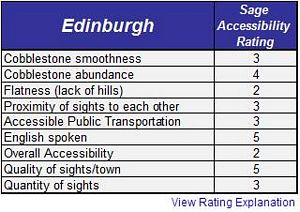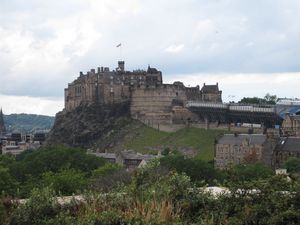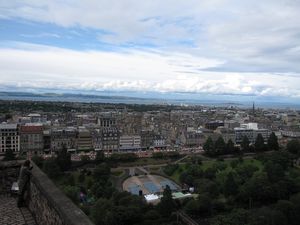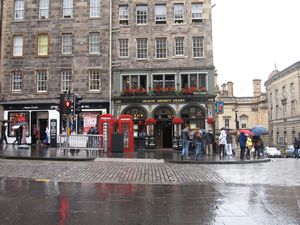Disabled Access Review of Edinburgh
 By John Sage
By John Sage
Edinburgh Disabled Access – Edinburgh sits on an extinct volcano that has provided a defensive refuge for people for at least 1200 years. The steep streets on this hill create the greatest obstacle for disabled access in Edinburgh.Edinburgh may very well be the most beautiful city in the entire United Kingdom. The medieval buildings in the Old Town as well as the Victorian buildings in the New Town provide a magnificent backdrop for an accessible trip to Scotland. As the capital of Scotland, Edinburgh has played a key part in the history of not only Scotland but also the United Kingdom. Consequently there are numerous world class attractions for disabled tourists to visit in Edinburgh including the Royal Museum of Scotland, the Edinburgh Castle, St. Gile’s Cathedral, and the National Gallery of Scotland.
Most Challenging Aspects of Edinburgh Disabled Access

Hills and more hills – As mentioned previously, Edinburgh was founded on an extinct volcano. Consequently, there are numerous steep streets some of which are among the steepest that disabled visitors to Europe will encounter. Manual wheelchair users visiting Edinburgh should plan each day to start at a high point in the city and work their way downhill during the day.
Edinburgh Castle – The Edinburgh castle (shown in the image on the right) contains numerous historical buildings and several museums. Getting between them requires going up and down steep streets covered in cobblestones.
Cobblestone streets – Several parts of the historical city centre have cobblestone streets including Edinburgh Castle and parts of the Royal Mile.
Best Aspects of Edinburgh Disabled Access

Edinburgh’s New Town – While most of the attractions and charm are located in Edinburgh’s Old Town, the best accessibility is located in Edinburgh’s New Town. Wheelchair visitors to Edinburgh may want to stay in this part of town, although they will have to go uphill to reach most of the tourist attractions.

UK Accessibility Standards – Accessible bathrooms are found in most tourist attractions in Edinburgh. Some, but not all, hotels have roll-in showers.
Smooth sidewalks, streets, and curb cuts – Although hilly, the streets and sidewalks in Edinburgh are generally smooth with curb cuts. The picture on the right taken on the Royal Mile (also known as High Street) shows a smooth sidewalk and curb cut.
Black Cabs – The Edinburgh black cabs have wheelchair ramps and provide an excellent option for avoiding the hills in Edinburgh.
English language – While many destinations in Europe present disabled travelers with the additional challenge of trying to communicate their accessibility needs in a foreign language, English speakers will have no problem in Edinburgh (other than understanding a Scottish accent!)
Small town – Although Edinburgh is the second largest city in Scotland, most of the tourist attractions are located in the historic city centre giving it a small town feel. The longest distance that you’ll need to travel between tourist attractions is about a mile (1.6 km)
Walking tour – Although Edinburgh is hilly, talking an accessible walking tour is a great way to see the city and definitely possible in a wheelchair. When choosing a disabled accessible Edinburgh walking tour, confirm that the route the company takes is an accessible one.
Accessible Busses – Several accessible bus lines run through the centre of Edinburgh. Because of the hilly nature of Edinburgh, manual wheelchair users should make sure that the route between their destination and where they get off the bus is flat or downhill.
Want a 100% Accessible Vacation?
View our Edinburgh Accessible Travel Packages
Read more:
Edinburgh Accessible Travel – main page
Pros and Cons of Edinburgh Disabled Access
7 Keys to Success for Edinburgh Disabled Travel
Edinburgh Mobility Scooter Rentals
Travel Insurance for Disabled Travelers
Edinburgh Trip Planning by Sage Traveling – Travel with Ease!
Contact our Edinburgh accessible travel consultants


